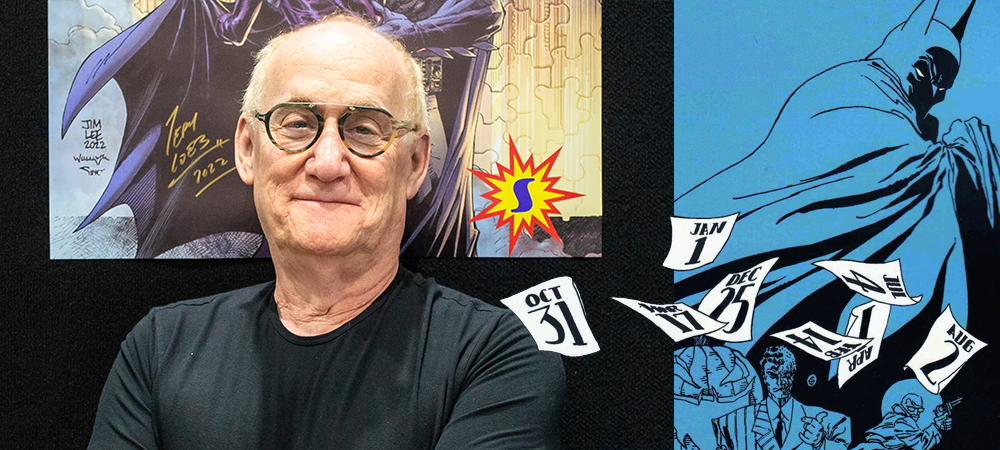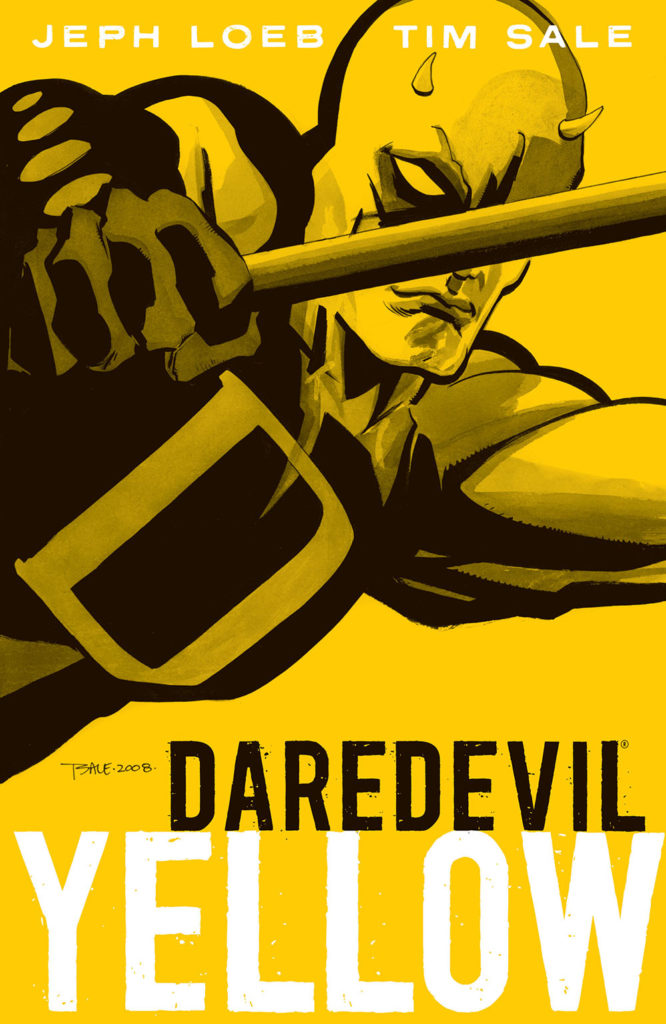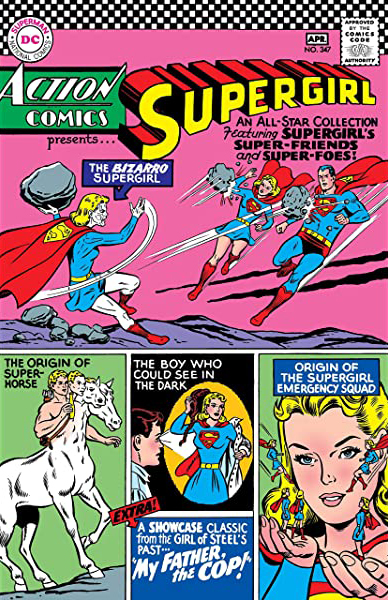
No Guest Found in this category
Renowned for his work on Batman: The Long Halloween, Batman: Hush and Spider-Man: Blue, among countless other titles, and as a producer on Jessica Jones, Daredevil and Teen Wolf, legendary comic, film and TV writer Jeph Loeb was happy to share some Supa-Tales from his expansive career at Supanova last November.
We’ve pulled together some highlights from Loeb’s Brisnova panel below.
 How did Harvey Dent become involved with Batman: The Long Halloween?
How did Harvey Dent become involved with Batman: The Long Halloween?
“The way it came about was that the late great Tim Sale and I had done three Halloween specials. At the time, I was either writing movies or television so doing more work in comics was not part of the plan. But when you get to work with Archie Goodwin, you make it part of the plan.
“We all went out to breakfast and he said to us, ‘I really like what you do with gangsters – I’d love for you to do something that deals with the crime element in Gotham City before the freaks took over.’ I sat at breakfast listening to this man I so admired and I didn’t want to say to him that I’d never written anything with gangsters.
“So Tim and I started thinking about this idea about doing something that happened after Year 1 that explained the Falcone family and that world. It wasn’t Archie that brought up the idea of Two-Face, it was Mark Waid. I was talking to him about what I was working on and he said, ‘I hope you do something with Harvey Dent. Nobody has really explored who Harvey was before he became Two-Face.’ That really fit with what I wanted to do with the story.”
On the importance of Daredevil: Yellow and Spider-Man: Blue
“The colour books came from a very honest place. That was that both Timmy and I are romantics… when I was asked to do Daredevil: Yellow, I think he thought that because I had written so much Batman that it’d be this dark, broody story. What he didn’t realise is that I was such a big fan of when Daredevil was an acrobat; the city loved him, and he wore that ridiculous yellow suit.
 “I wanted to tell a story about the fun of being a hero, but at the same time, in the current books, Karen Page had just been killed. Tim and I were very much about remembering those characters that had us so involved. I’m a big believer in first love and in the partner that you meet at the beginning turns out to be your partner for life. I didn’t want Karen to feel forgotten.
“I wanted to tell a story about the fun of being a hero, but at the same time, in the current books, Karen Page had just been killed. Tim and I were very much about remembering those characters that had us so involved. I’m a big believer in first love and in the partner that you meet at the beginning turns out to be your partner for life. I didn’t want Karen to feel forgotten.
“The night that Gwen Stacey died was such a seminal Spider-Man story. I never found it fair that Gwen died… the woman that Peter fell in love with before Mary Jane was a story that I really wanted to tell.”
Writing on Smallville
“I’ve always written Superman as Clark; I never think of him as this alien being who can move planets around. He’s a Kansas farm boy. And that’s what they wanted to do. About halfway through the first season they called and asked me to come and join the show. I’d never worked on a television series before… and I really liked the notion of it.
“It wasn’t like being a film writer, you’re not by yourself. In television, you’ve signed up as a team. In those days we were making 22 episodes. Every week we’d do what’s called ‘breaking a story’ where you’d tell a story in five acts… the experience on that show was what taught me how to write television.
“It was emotion first, character first, that you always try to have some kind of humour. I think a real testament to that show with the way that they grew not just as actors but as people. Red is my favourite episode. It was my first episode. We just had a lot of fun with [Supanova alumni Tom Welling] and deciding that the opposite of Tom was James Dean… turning him into a character out of Grease.”
 What started his journey into comic books
What started his journey into comic books
“I started reading Betty, Veronica and Archie when I was 7 or 8 years old. I went away to summer camp and while I was there, there was a Superman comic. Believe it or not, Superman died… what I remembered was that Lex poisoned him and they put him in a glass coffin and shot it around the universe so that all the different planets could pay homage to the greatest hero. It was a two-part story.
“I wrote a letter to my Mother saying, ‘Dear Mom, I need you to go to the pharmacy and pick up Action Comics #347. It stars Superman. They’re going to tell you that you want the Superman comics. You do not want the Superman comics, you want the Action Comics part 2 of a story.’ It goes on for two pages!
“That was it, I was in. I was mostly in because of the way that they solved it. Everyone had come out to throw flowers on this glass coffin, and the Bizarros came out and threw blue or white kryptonite. One of them kills plant life, and it killed the bacteria in the kryptonite that was poisoning him. And I thought, ‘Wow! Someone really thought about this.’
Taking on a new character
“It’s pretty hard to find a comic that I don’t have some experience with. The most important thing for me is the research, which means reading as much as you can. I think the stories that I tell the best are within the pages of the stories that you already know.
“The Long Halloween is a perfect example; it takes place around Year 1, and we know things happen in Year 2… I think it’s important to stay true to the character. That Batman doesn’t talk a lot because Batman is grim, that Superman is friendly and filled with hope, that Spider-Man tells joke, that the Hulk gets angry…
“What is the classic take on the character, and what is fun for me? The most important person is the artist; what does the artist want to draw? What do they do well? I wouldn’t write the same Batman story for Tim Sale as I would for Jim Lee that I would for Ed McGuinness.”
Lead Image: Jeph Loeb at Supanova 2022 – Adelaide next to cover art for ‘Batman: The Long Halloween’. Photo by Maddie Purdon









